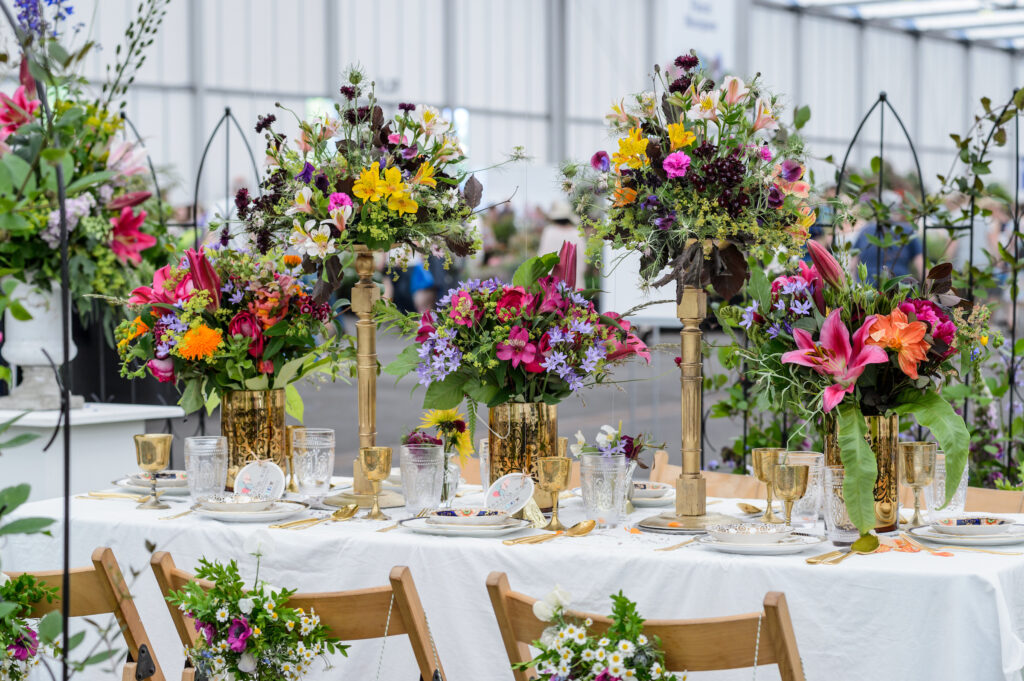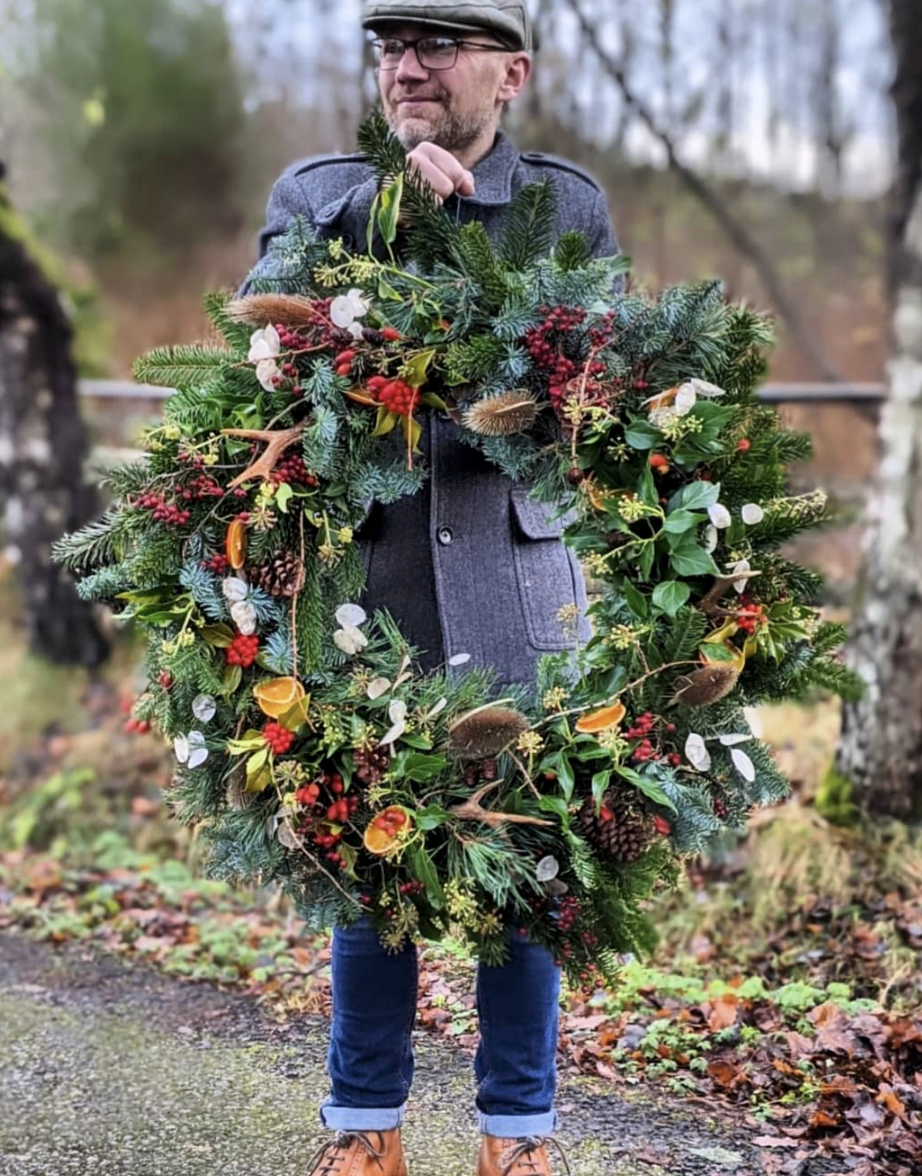Future-proofing flower production
As COP 27 continues in Egypt, and in the wake of the most extreme European heatwave for decades, the urgency of addressing climate change is – or should be – uppermost in our minds. Harriet Mullins, Devon-based flower farmer and FFTF Regional Co-ordinator for the South West, has been giving much thought to how she can protect her business against increasingly volatile weather. Her advice is a great advert for how FFTF members are responding to the climate crisis, as well as a valuable lesson for anyone growing flowers – or plants of any kind – on any scale, whether on a farm, on an allotment, or in a garden.
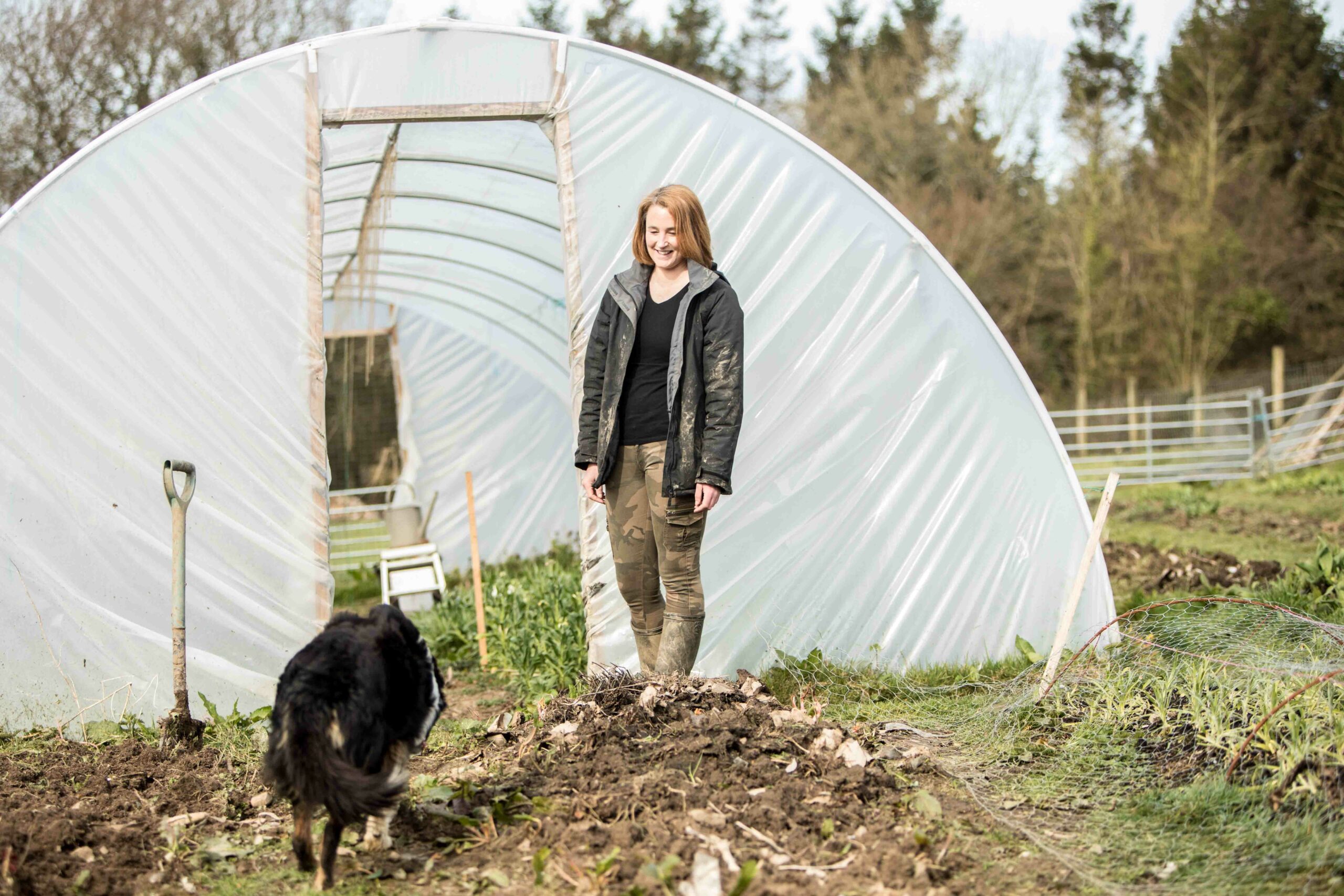
Harriet on her plot at Instow – few flowers at this time of year, but the perfect opportunity for taking stock and planning for the future.
If we had managed to put the climate crisis out of our minds in previous years, the summer of 2022 has been a wake-up call. The vast majority of British flower farmers dealt with the longest drought they had ever seen, combined with some of the highest temperatures on record. At my farm in Devon, we have had some quite substantial rain over the past couple of months, and yet our stream is still barely a trickle and our local reservoir is nowhere near its usual levels at this time of year.
I have been flower farming for 6 years now and each has had its own problems. I have had flooding; such dry springs that my seedlings sat stubbornly in the ground without growing an inch; snow in April; and this summer our outdoor thermometer measured 40c on some days, with no rain for months.
The met office says in coming years we will see
- Warmer and wetter winters
- Hotter and drier summers
- More frequent and intense weather extremes
(Source: Climate change in the UK – Met Office)
********
So what, if anything, can we do to sustain our flowers through this?
My main aim over the coming years is soil, soil, soil; specifically, nurturing a soil which can hold moisture and nutrients, which won’t bake into a hard crust (I am on clay), and which will give my seedlings what they need as quickly as possible.
To do this I will be:
- Practising no-dig methods – not cultivating the soil protects its structure, which reduces the impact of extreme heat.
- Adding organic matter – doing this at the right times (when the soil is damp not dry, for example) helps to conserve moisture.
- Using cover crops/successional planting – I will not leave beds empty and exposed to the elements, as this allows the summer heat direct access to the soil and also causes nutrient leaching. Once a crop is removed, either it will be replaced straight away or, if not, a cover crop will be planted. In this way the soil structure is protected as well as nutrients being conserved (or even, in the case of some cover crops, enhanced).
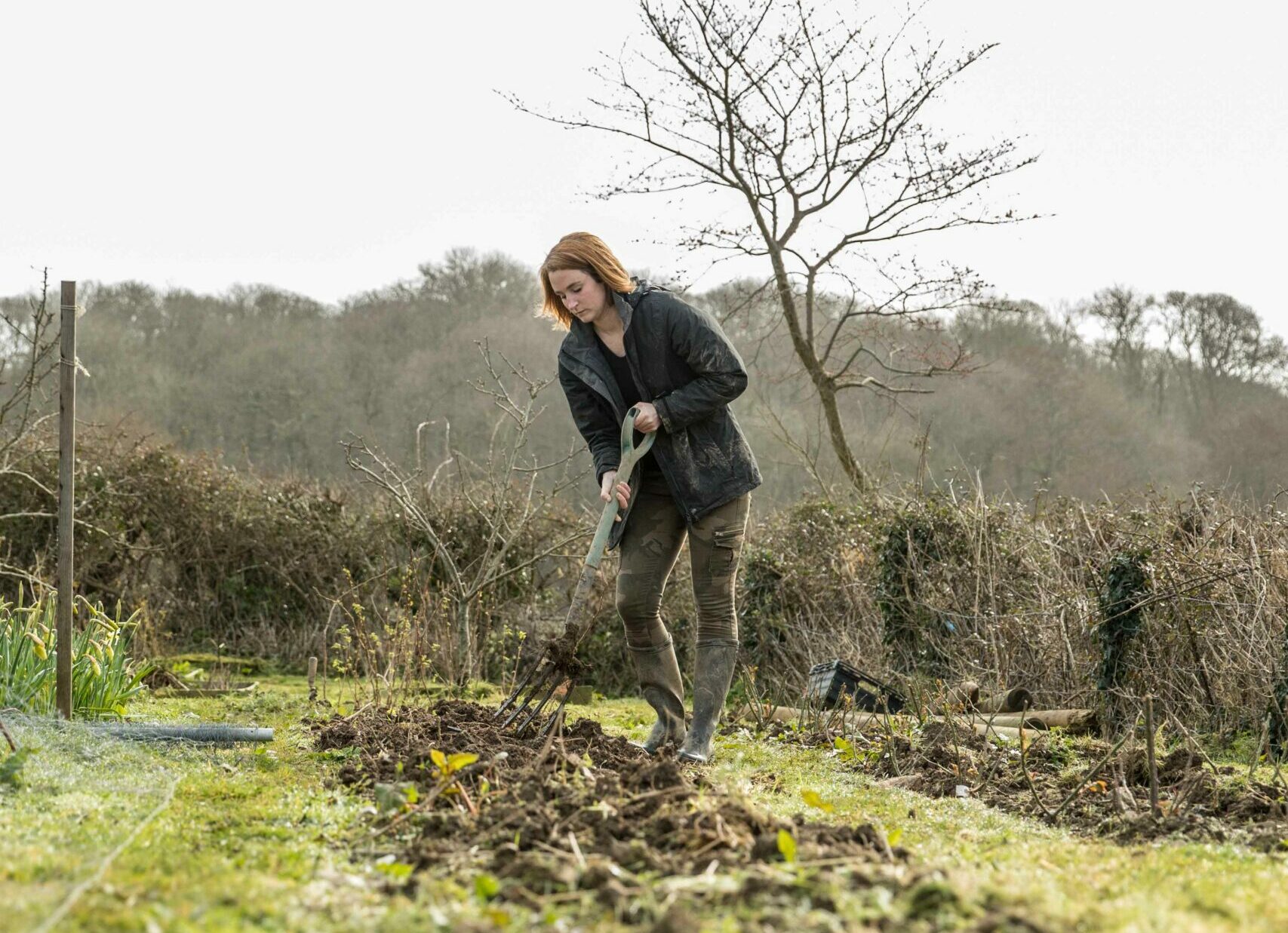
The soil is everything: treating our soil with understanding and respect gives us the best chance of continuing to grow strong and healthy plants.
- Focusing on the microbiology and fungi in the soil – this is a new level of growing for me, but I recently attended a course on the soil food web at Rhizophyllia which really opened my eyes. The food web truly is the basis of everything, and keeping it in balance improves nutrient delivery to plants as well as soil structure and pest & disease resistance.
- Considering irrigation in my outside beds, whereas previously I have only irrigated my polytunnels. Up until now natural rainfall has been enough outside, but this year that was not the case, and I had to let some crops succumb to the drought earlier than I would have liked in order to have time to water upcoming flowers. There is of course the issue of how much water we use, and how to mitigate this. Irrigation tape is more efficient than watering by hand as the water goes directly to the root of the plant, with less lost to evaporation. This summer I also irrigated overnight to prevent evaporation.
- Studying my plants and recording what does well and what doesn’t, so I can decide which flowers are important enough to my business to keep – and therefore to irrigate. My roses, for example, will need irrigation next year I think, but I do a lot of wedding work for which they are essential. Sweet peas, on the other hand, I only used a handful of times so I will leave them to fend for themselves.
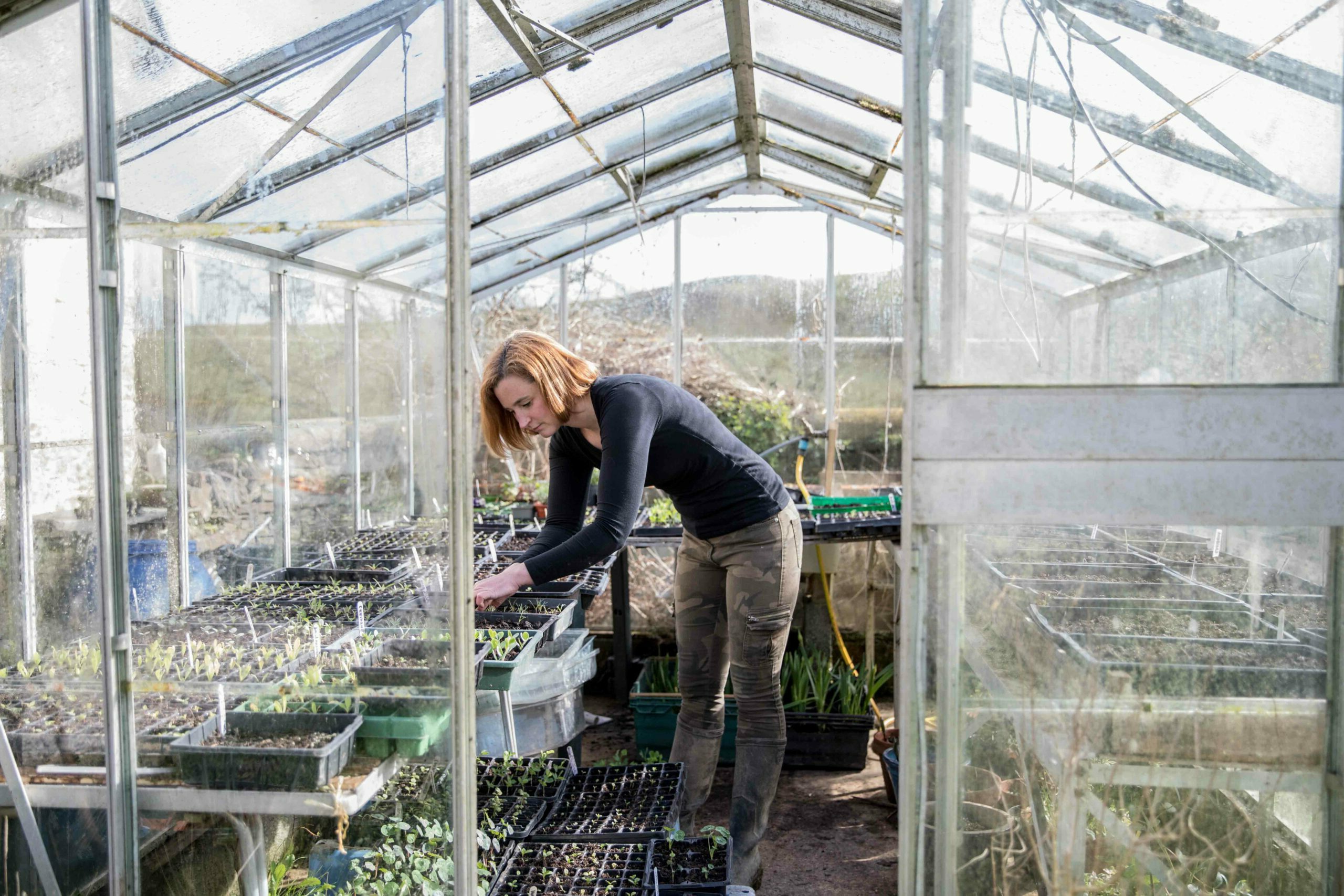
New weather patterns mean we can adapt how and when we propagate plants, sometimes moving away from received wisdom.
- Playing with seed sowing schedules and plantings – I now take the instructions on seed packets to be guidelines rather than strict rules, especially here in the south west. We are seeing a shift towards very mild autumns and winters – it is October as I write and our night-time temperatures are still over 12c. I’ve been having success with late sowings – of cosmos and calendula, for example – sown towards to the end of July and planted out in August, which are now flowering in my polytunnel. This spring I planted seedlings out early thinking I might have to fleece them, and I never did. I will be putting my tulip bulbs in later this autumn in the hope the soil will be colder and I’ll be less likely to repeat the tulip fire disaster I had this year.
*******
Other changes we can all make to help the climate in general:
- Materials – switching to peat free compost, and thinking about the carbon footprint of things like perlite and vermiculite.
- Water – my current downfall is that I am on mains water, which I use a lot of, and perhaps will need to use more of in the future. We are looking into rainwater collection systems for next year, however this will only go so far
- Compost – making your own rather than buying in. Easier if you generate a large amount of green waste each year, as I do. But at any scale, investing in a shredder is a great way to speed up the breakdown of waste material and help your compost ‘make’ quicker.
- Shout – petition your local MPs, write to government, attend protests if you feel able to. We need to be making noise about these issues, and forcing governmental change, as this will be the difference between stabilising the climate crisis and seeing it worsen dramatically within our lifetimes.
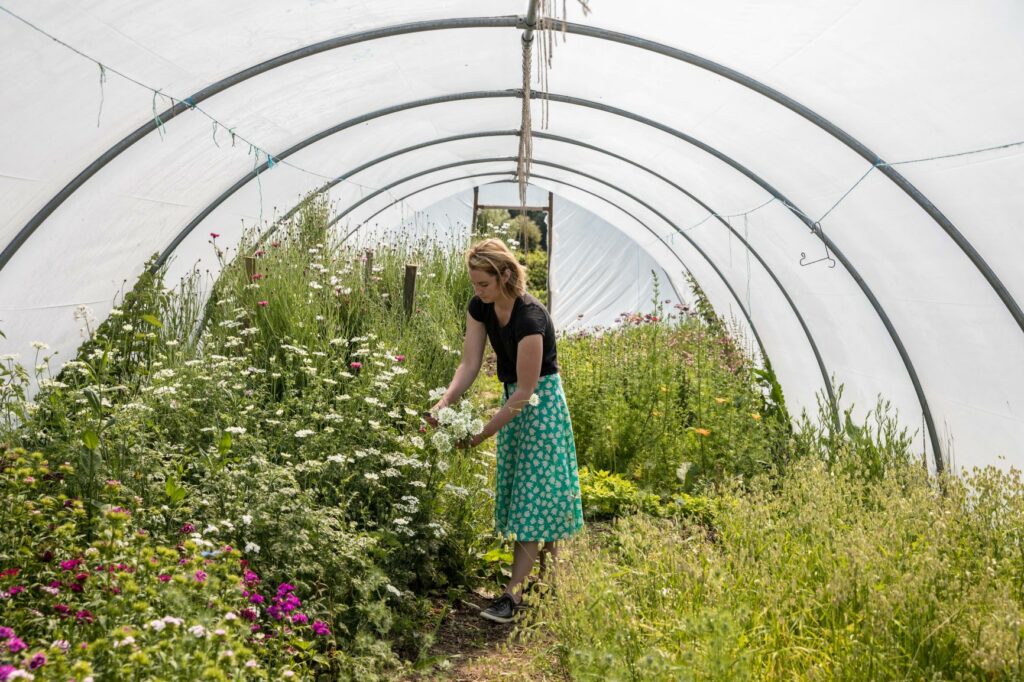
Worth fighting for: the floral bounty of an English summer as we know it.
— Harriet Mullins runs Sweetpeas and Sunflowers in North Devon.
